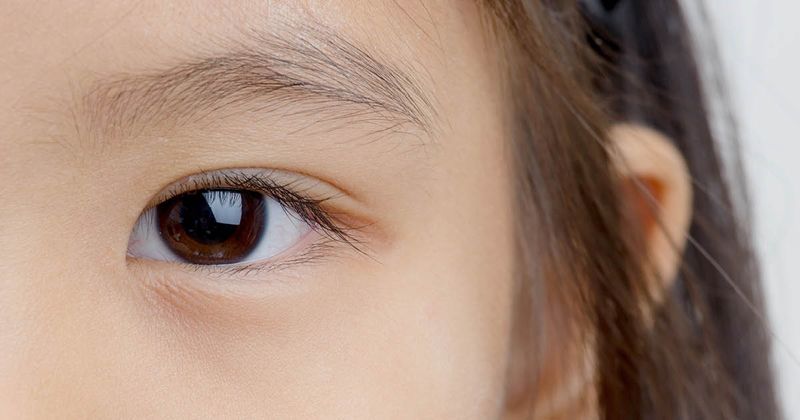Myopia Action Month: Take a closer look at management strategies, advances in care
Click Here to Manage Email Alerts
For the second consecutive year, Myopia Profile announced that September is Myopia Action Month, a global initiative designed to empower eye care professionals to advocate for myopia patient care and awareness.
“When we launched Myopia Action Month last year, feedback from the eye care community and industry was essential in shaping the curriculum,” Kate Gifford, PhD, co-founder and director of Myopia Profile, said in a press release. “Heading into the second year, we’re expanding upon a successful foundation. The 2024 edition will bring even more engaging content and practical learning experiences.”

This year’s program includes two educational tracks, each with four, 15-minute recorded lectures available on-demand on Myopia Profile’s website. The organization also has expanded social media activities for eye care providers and provided new myopia management resources and product videos.
In recognition of Myopia Action Month, Healio has gathered its top stories highlighting management strategies and advancements in myopia care.
Model may help predict onset of myopia in children up to age 14 years
Refractive error, age, sex and race/ethnicity can be predictive factors in determining the probability of myopia onset in prepubescent children, according to a study published in Optometry and Vision Science.
“A predictive model would be useful for sample size planning in myopia prevention clinical trials, providing estimates of the likelihood of conversion from emmetropia to myopia, given different sample configurations of age, sex, race/ethnicity, baseline refractive error or other significant covariates,” Donald O. Mutti, OD, PhD, FAAO, the E.F. Wildermuth Foundation Professor in Optometry at The Ohio State University College of Optometry, and colleagues wrote. “A predictive model would help the clinician advise an individual child and their family on the probability of future refractive error.” Read more.
Naked-eye 3-D vision training safe, effective in treating myopia in children
Naked-eye 3-dimensional vision training was safe and controlled progression of axial length and spherical equivalent refraction in children with myopia, according to a study conducted in China and published in JAMA Pediatrics.
“To prevent the occurrence and progression of myopia in children, many myopia intervention methods have been developed, including orthokeratology, soft contact lenses and low-concentration atropine eye drops,” Rui Xie, MM, of Sun Yat-sen University in China, and colleagues wrote. “For interventions used in children and adolescents, safety is a key concern for clinicians and parents.” Read more.
Anxiety, mood disorders more prevalent in adolescents with myopia
Adolescents with myopia have up to a twofold increased risk of experiencing anxiety and mood disorders, and the odds for both conditions increase with myopia severity, according to a study.
Data from 891,505 Israeli adolescents evaluated before military service were analyzed. The age range of participants was between 16 and 20 years, and 57.7% were male. A total of 279,419 subjects had myopia, which was mild (–0.75 D to –3 D) in 19.3% of the cases, moderate (–3 D to –6 D) in 9.6% and severe (–6 D or more) in 2.5%. Read more.
World Council of Optometry prioritizes myopia management with education, ambassadors
The World Council of Optometry is supporting its stance that myopia management is standard of care by promoting a global educational resource, according to council leadership at Optometry’s Meeting.
The WCO CooperVision Myopia Management Navigator is an online resource that guides clinicians through mitigation, measurement and management, the group announced this spring. A team of ambassadors was also appointed to raise awareness. Read more.
‘Change agents’ selected for AOA-CooperVision myopia initiative
The American Optometric Association and CooperVision announced the 60 inaugural “change agents” who will lead the Myopia Collective, an initiative that advocates for comprehensive treatment for myopia.
Healio reported in April that the two organizations partnered on this effort, aiming to elevate the standard of care for children with myopia through comprehensive treatment, rather than just correction. Read more.
Control myopia in children to prevent retinal problems later in life
Most parents are unaware of the complications of high myopia as well as the potential to control it in children, Janelle Davison, OD, said at Vision Expo East.
“Every 1 D increase in myopia increases the risk of myopic macular degeneration by 67% and retinal detachment by 30%,” Davison said, citing a study by Bullimore and colleagues published in Optometry & Vision Science. Read more.
VIDEO: Optometrists should ‘consider myopia as a disease’ in children
Treatment should be offered to all children with myopia, even in its early stages, according to a corporate executive at Optometry’s Meeting.
“We are advocating for comprehensive eye exams in children,” Kate A. McClure, OD, MS, FAAO, North American professional education lead for the myopia team at Johnson & Johnson, said in Healio this video perspective. “It’s really important that we catch myopia early in these children we see in our practice.” Read more.
